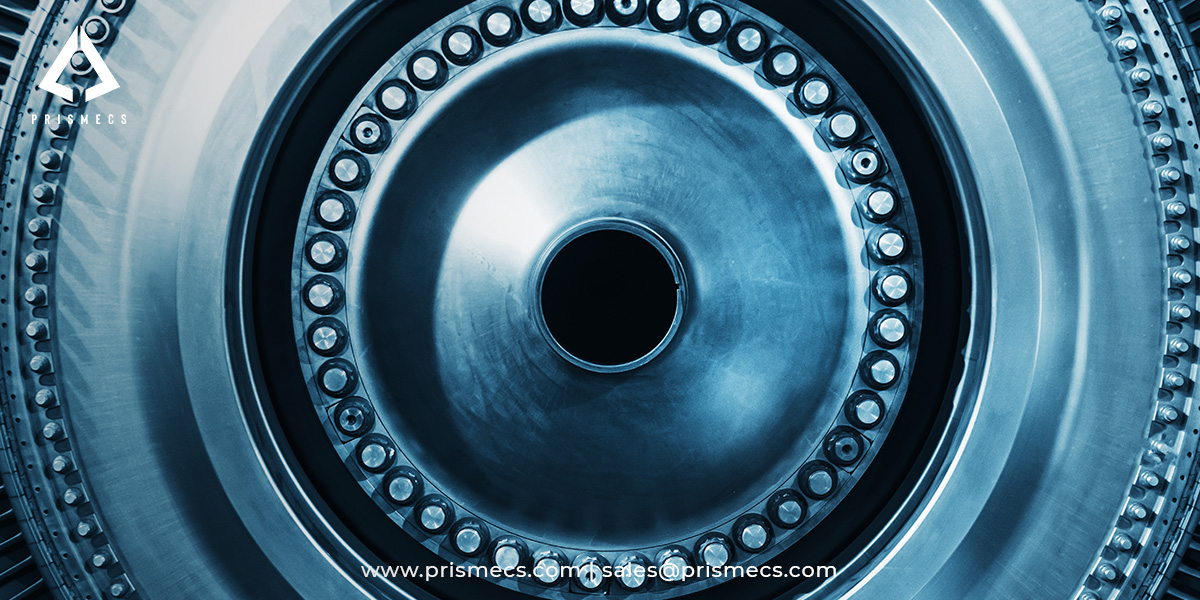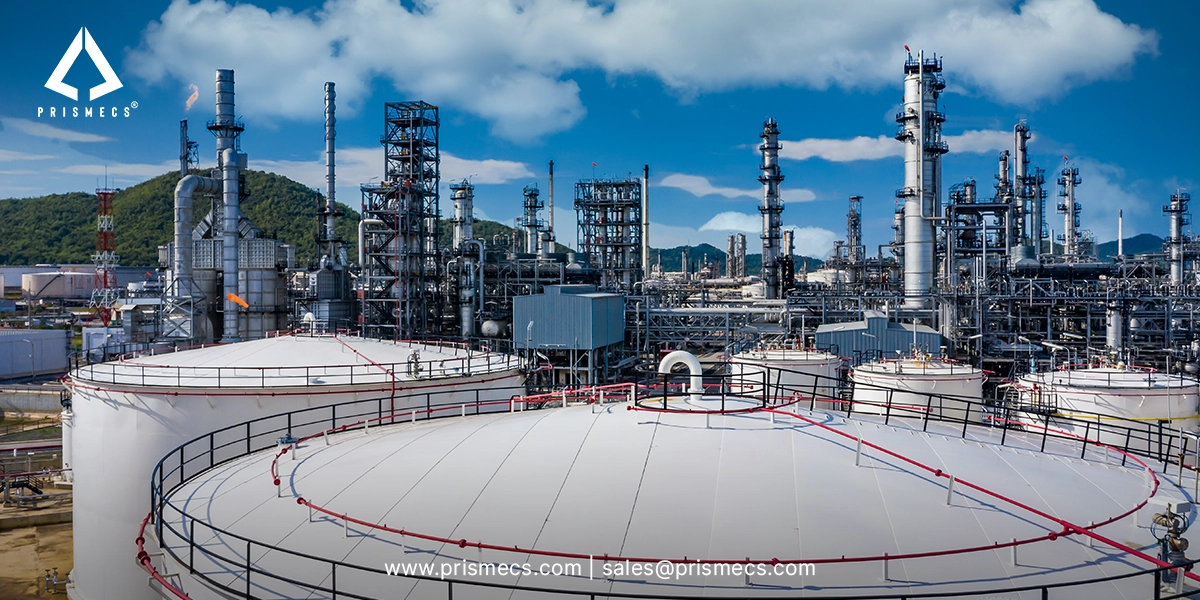
A gas turbine faces many operational problems. These are Rotor vibration, bearing failures, and Blade failures, but we will discuss only gas turbine bearing failures in this article.
Bearing failures are one of the common causes of turbine generator shutdown. While faulty design or manufacturing can be infrequently responsible, the most frequent cause of these failures is inappropriate operating conditions. Information given in this write-up will help you understand how many operating conditions affect bearing performance and what the operator can do to minimize the occurrence of bearing failures.
Common causes of Gas turbine bearing failure
A root cause analysis indicates that the leading causes of the bearing failure were mistakes made during the gas turbine overhaul and repair. They are primarily related to the inspection & quality checks carried out after the significant modification and alignment of the train modules.
A bearing failure happens when it fails to meet its expected life or performance stages, often causing a machine shaft to die. The machine it is a part of can break down or shut down.
You can see many causes of bearing failures, and few of them are more typical than others. More than 70% of bearing failures are because of poor fitting, lubrication, and contamination.
Let's deep dive into the following detail about these three typical reasons bearings fail as they relate to your gas turbine-related process.
Improper Lubrication
This should be one of the first and most common reasons when inspecting a bearing that has failed or is in distress. To provide proper lubrication, adequate viscosity at operating temperature is a necessity. While troubleshooting, you need to look for highly polished & discolored bearing raceways to evaluate if working surfaces lack acceptable viscosity at operating temperature. Although, over-lubricating can act just as detrimental as an under-lubricating process.
"Under-lubrication risks metal-to-metal contact. Over-lubrication becomes the cause of heat build-up & friction as the rolling components continuously try to push additional grease out of the way." according to IBT.
There are multiple causes of cage damage. Some of the more typical ones include vibration, extra speed, wear, or blockage. Also, many contaminants can become the reason for problems with a bearing. Dirt, sand, & water are the most common ones you run into. Still, chemicals & corrosives can also damage or stress your approaches.
These contaminants overcome viscosity which becomes the cause of corrosion to the bearing failure, disrupts the oil film, and causes erosion, leading to the generation of countless abrasive particles. Ensure to keep work locations, tools, fixtures, & hands clean, as this avoids contamination failures.
Misalignment
Misalignments lead to extensive vibration and loads. Few bearings (not all, though) can handle minor misalignments. The most usually found causes of misalignment include:
- Bent shafts.
- Dirt or burrs on the post.
- Housing shoulders.
- Shaft threads that are not square with shaft seals.
- Lock at the nuts along with faces that are not square to the thread axis.
To avoid misalignment, there are some of the best practices you can keep in mind. Ensure you inspect shafts & housing regularly, utilize precision-grade locknuts, and shim the accommodations as required.
Improper handling & Inadequate Internal Clearance
Improperly storing bearings become the cause of issues later on because they're exposed to external elements like dampness, dust, & varying temperatures. When boxes are opened or wrappings are torn prematurely, the handling becomes an issue because it can tell the bearings to dirt & corrosive components.
Reliable Planet says to watch out for dampness & temperatures that could become the reason for rust or uncovered bearings in the storage location.
Bearing failure impacts a bearing component's friction, load zone size, and fatigue life. If the clearance of the bearing is not equal, extra heat will build up.
As we've talked about, high temperatures are not suitable for bearings. They can cause other problems already listed above such as lubrication & internal friction. Now that you know more about the most common reasons for bearing failures you can witness in your facility, how exactly can you avoid bearing loss?
Connect with Prismecs to learn about our full preventative measures that you can implement at your facility today and avoid bearing failures! I hope you'll get all the relevant assistance on this exclusive platform. If you face the bearing failure issue, you are on the right platform. You can connect through this number: 1888 7747632
What is the most common cause of bearing distress?
According to Bearing Failure: Causes & Cures, the most typical causes of misalignment include bent shafts, dirt or burrs on shaft or housing shoulders, shaft risks that are not square with shaft seals, and locking nuts along with faces that are not square to the axis.
What happens when a bearing fails?
If your wheel bearing fails, it can become the reason for the wheel to stop while you are driving or fall off. At the very least, before a wheel or bearing failure, a failed wheel bearing can cause significant damage to your vehicle. So, it's essential to keep an eye on these and keep them managed all the time.
What is the reason for a bearing to seize?
Bearing creates heat and is seized up by heat, disabling spinning. Discoloration, softening & welding of raceway surface, rolling contact surfaces, and rib surface,
How can bearing failure be prevented?
These are the few steps to preventing bearing failure
- Select the correct bearing design
- Store bearings actively
- Install bearings in a proper way
- Lubricate bearings according to manufacturers' guidance
- Align all the machinery precisely
- Balance equipment very well
- Extra diagnostic tests
What is the maximum bearable temperature for heating bearings?
Usually, a bearing temperature should be between 80 to 90 °C (144 to 162 °F) above that of the shaft is great for mounting. Never heat a bearing to a temperature of more than 125 °C (257 °F) because the material might change metallurgic ally and generate alterations in diameter or hardness.
Tags: ["gas turbine maintenance" "gas turbine repair" "gas turbine repair services"]
recent posts

Petrochemicals
6 minutes read
Petrochemical EPC Services for Complex Plant Projects
Petrochemical EPC services are designed to manage complex plant projects, brownfield integration, strict regulations, and tight schedules.

Renewables
5 minutes read
How Renewable Energy Systems Work Efficiently
Discover how renewable energy systems work efficiently to provide affordable, zero carbon energy, overcome storage challenges, and power for a sustain...

I and C Services
7 minutes read
Expert Commissioning Services for Safe, Efficient Operations
Learn how expert commissioning services support safe, efficient, and reliable energy operations across complex industrial and power systems.

Green Hydrogen
7 minutes read
Green Hydrogen Plant Technology Guide
Discover how a green hydrogen plant works, its key technologies, and its role in clean energy. Explore solutions for scalable, carbon-free hydrogen pr...